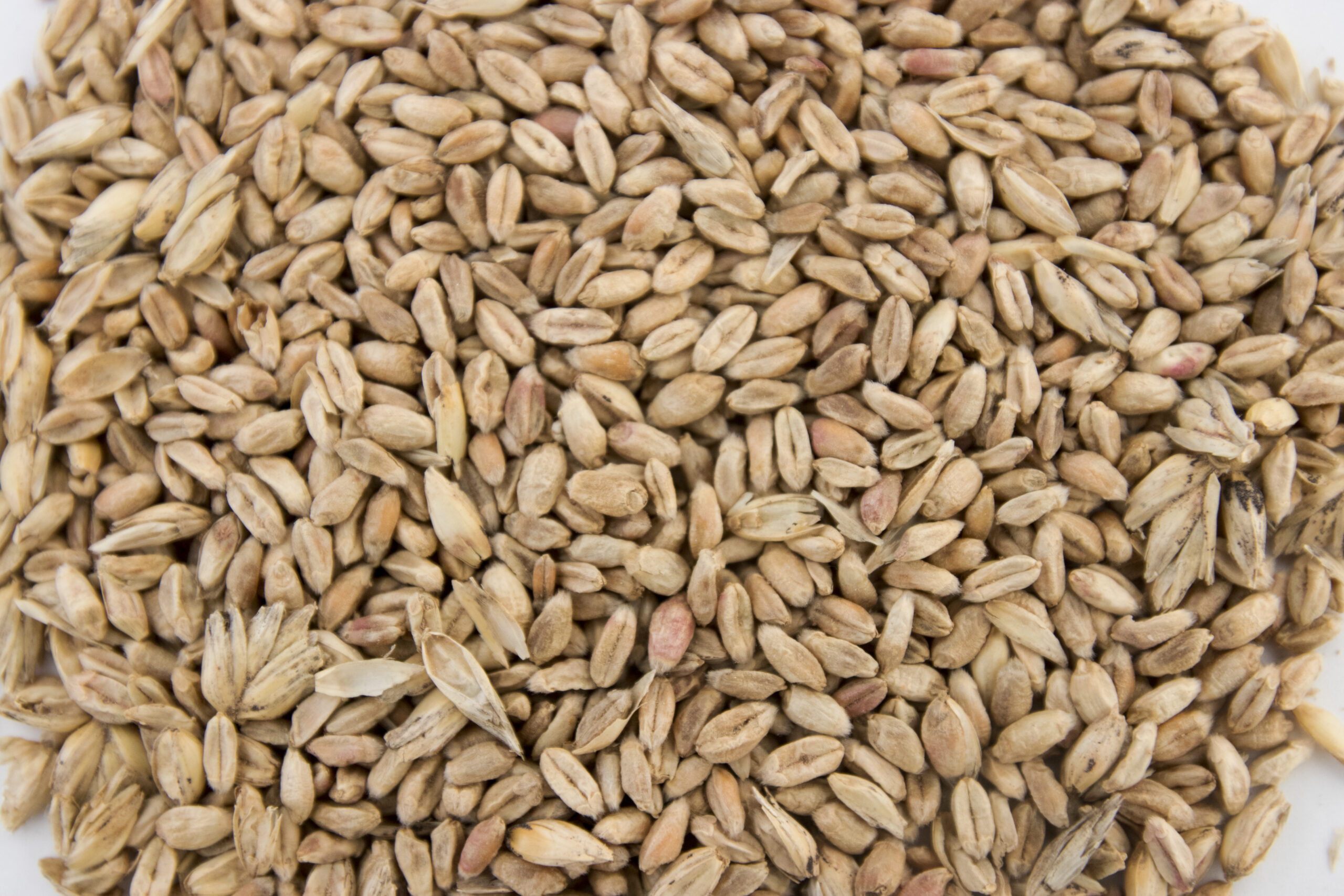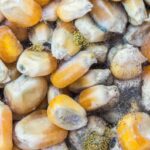By Vinil Samraj Padmini, Global Category Manager Feed Quality, and Marisabel Caballero, Global Technical Manager Poultry, EW Nutrition
Climate across the globe has changed, with rising atmospheric temperatures and carbon dioxide levels. This change favors the growth of toxigenic fungi in crops and thus increases the risk of mycotoxin contamination. When contaminating feed, mycotoxins exert adverse effects in animals and could be transferred into products such as milk and eggs.

95% of the samples were contaminated with at least one mycotoxin
EW Nutrition constantly analyzes feed and raw material samples for their mycotoxin contamination. We report challenges from the most common mycotoxins hindering animal health around the globe.
Worldwide, more than 4,000 analyses on more than 1,000 samples were performed between June – October of the present year. The samples covered grain and by-products commonly used in animal feed worldwide. Figure 1 shows the percentage of the samples tested for which a positive result was found, detailing the number of mycotoxins per sample.
The number of mycotoxins analyzed per sample can vary based on regional risk-evaluation, including weather conditions, raw material origin and past frequency of positives. However, a minimum number of samples per region is always analyzed for the full spectrum, in order to monitor and corroborate the risk level.
3 or more mycotoxins per sample
95% of the samples were contaminated with at least one mycotoxin. In Europe and Latin America, most samples were analyzed for up to five mycotoxins, and were found contaminated with at least two. In South Asia, three mycotoxins were regularly analyzed per sample and most samples were positive for two. Worldwide, it is common to find samples with 3 or more mycotoxins, indicating that, even in raw materials, poly-contamination is the rule.
Aflatoxin: Main concern for South Asia
From all samples tested positively for mycotoxin contamination, 55% were contaminated with Aflatoxins. In all regions, the maximum levels lay over the thresholds for dairy and poultry. In Europe, less than 20% of the samples were contaminated with Aflatoxin. In Europe and the USA, the average contamination is low, hence this toxin can hardly be considered an issue for animal production in those areas (Figure 2).
In South Asia, where high temperatures and humidity are prevalent, Aflatoxin was detected in more than 95% of the samples and the average contamination is over all thresholds. Management strategies, such as the use of mold inhibitors for stored grain and toxin binders in feed, are necessary in this area to keep animals healthy and productive.
ImpactAflatoxins have a negative impact on animal performance, as they affect the function of liver and kidney, alter the immune function, and impair protein synthesis. This affects weight gain, feed efficiency and mortality. Carryover into milk, eggs and edible organs is possible with high or chronic intake of the toxin. |
Fumonisins: Main concern for LATAM, also global
Fumonisin was found in 70% of the samples globally and roughly in 90% of the samples coming from Latin America (figure 3). Moreover, in LATAM, more than 50% of the results have values over the threshold for dairy and swine, and 14% over the threshold for poultry, making it a great concern in the area. South Asia is the second concern area, with a high proportion of contaminated samples (80%) and 14% of them representing a danger for poultry production.
ImpactThe main issue with the typical contamination levels of fumonisins – often considered of low risk – is their capacity to disrupt gut health. As their absorption is low, fumonisins interact with other toxins and the gut barrier components, including those affecting immunity and the microbiome. They are known to decrease the available surface for nutrient digestion and absorption, and to increase the risk and incidence of gut-related diseases. As a result, lower productivity is expected in animals exposed to even low levels of this toxin. |
Deoxynivalenol (DON): Present worldwide
All across the regions, the maximum tested levels lay over the threshold for dairy, poultry, and swine. This trichothecene was found in more than 70% of the samples analyzed worldwide. In the United States, more than 75% of the positive tested samples showed a contamination with DON and the average of the positives exceeded the thresholds for swine and poultry.
The region with highest maximum values is LATAM, followed by South Asia, and the region with the highest frequency of positives in analyzed samples is Europe. Thus, it can be concluded that the worldwide frequency and levels in which DON is found represent a high risk for production animals.
ImpactDeoxynivalenol shows a broad spectrum of toxic effects in animals. In poultry and swine, for instance, this mycotoxin is related to lesions in the gastrointestinal tract and alterations in the immune response. This, in turn, leads to lower productivity and poor feed efficiency. DON also interacts with the microbiome, and it is known that it favors the colonization of coliform bacteria in pigs. |
Ruminants can tolerate 10–20 times more DON than, for example, pigs. The majority of ingested DON is converted into the less toxic de-epoxy DON, but the degradation rate is influenced by different factors such as the diet, where high starch decrease the process. Moreover, DON also has a detrimental effect on rumen microorganisms, impacting its fermentative capacity.
T2: A danger for poultry producers word-wide
Average levels of T2 were over the threshold for poultry in all regions, with a high presence (>70% of the analyzed samples) in Europe, the US & LATAM.
ImpactT-2 s is a potent inhibitor of protein synthesis, which affects actively dividing cells, such as the lining of the gastrointestinal tract, skin, and immune cells. The consequences include weight loss or poor weight gain, diarrhea, skin and beak lesions, and decreased production. T-2 is de-epoxidated in the rumen to HT-2 and neosolaniol, which are significantly less toxic than the parent toxin. In acidotic animals, rumen detoxification of T-2 toxin is impaired and animals may show gastroenteritis and intestinal hemorrhages. |
Zearalenone: 80% positive tests globally
More than 80% of all samples tested for this mycotoxin were found positive. The maximum contaminations lay over the thresholds for dairy and swine. These high levels found should not be ignored, considering feedstuffs for long living and reproduction animals.
ImpactEspecially in pig breeding, Zearalenone is an important issue, due to its high absorption and rapid biotransformation into more estrogenic components. Its structural similarity with 17β-estradiol leads this toxin to impair reproductive performance in cows and sows. Recent studies point to interactions of Zearalenone with immune cells and organs in animals, leading to alterations in cell viability, proliferation, and functionality. Consequences are alterations of the immune response, enhancing the effects of other challenges. |
A bad year for crops could be a bad year for production animals
The high mycotoxin contamination found so far in 2021 is partially explained by climate events, such as high temperature and humidity. Temperate zones such as Europe or parts of the USA tend to have higher contaminations compared with previous years.
Multiple mycotoxins co-occur, increasing their impact on animals. Certain combinations of mycotoxins are known to have synergistic or additive effects, aggravating their adverse effects.
To safeguard animal performance, it is important to continually strive for low levels of contamination and to manage the risk of mycotoxins through the use effective tools to measure, interpret, and manage the risk. MasterRisk can aid in the interpretation of mycotoxin risks, weighing in the animal species, age, purpose, as well as the mycotoxin exposure and interactions.















